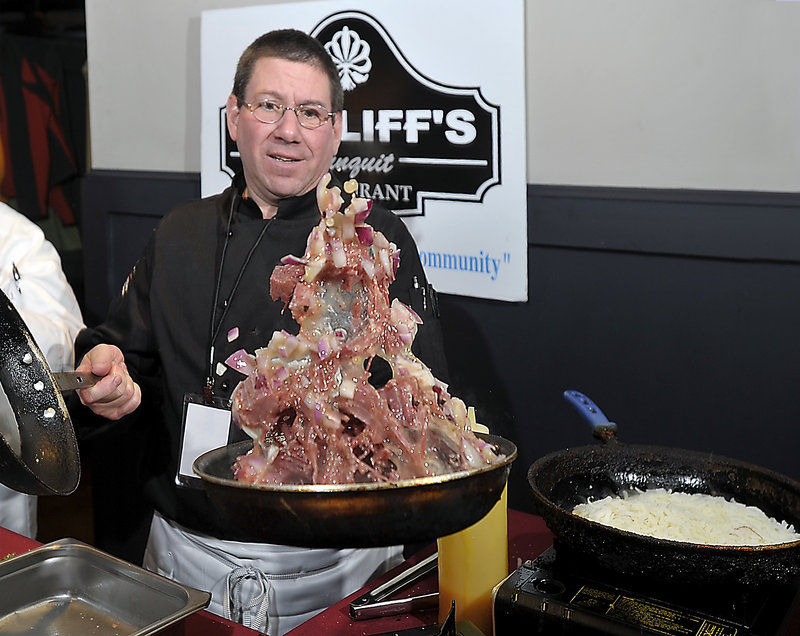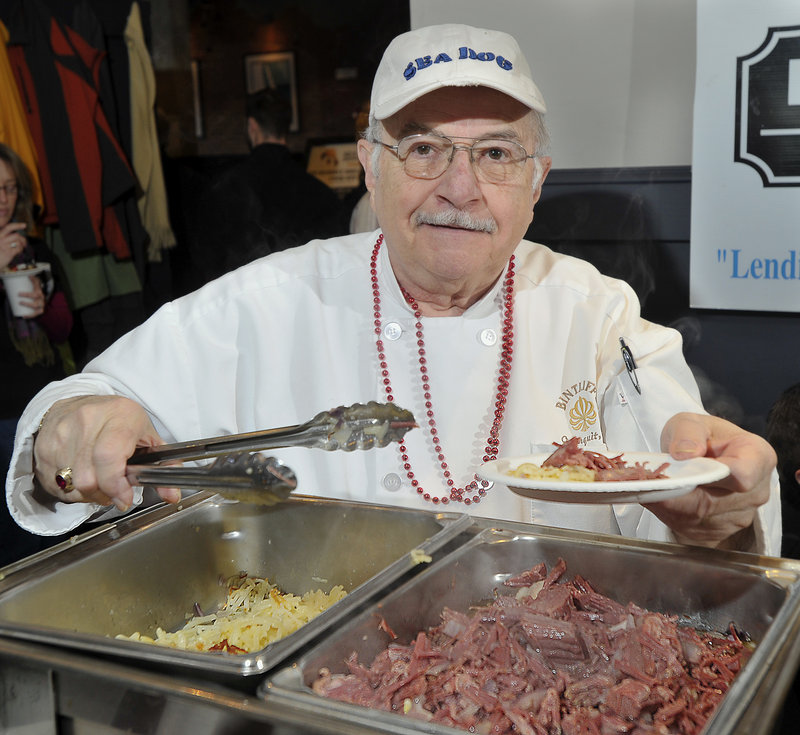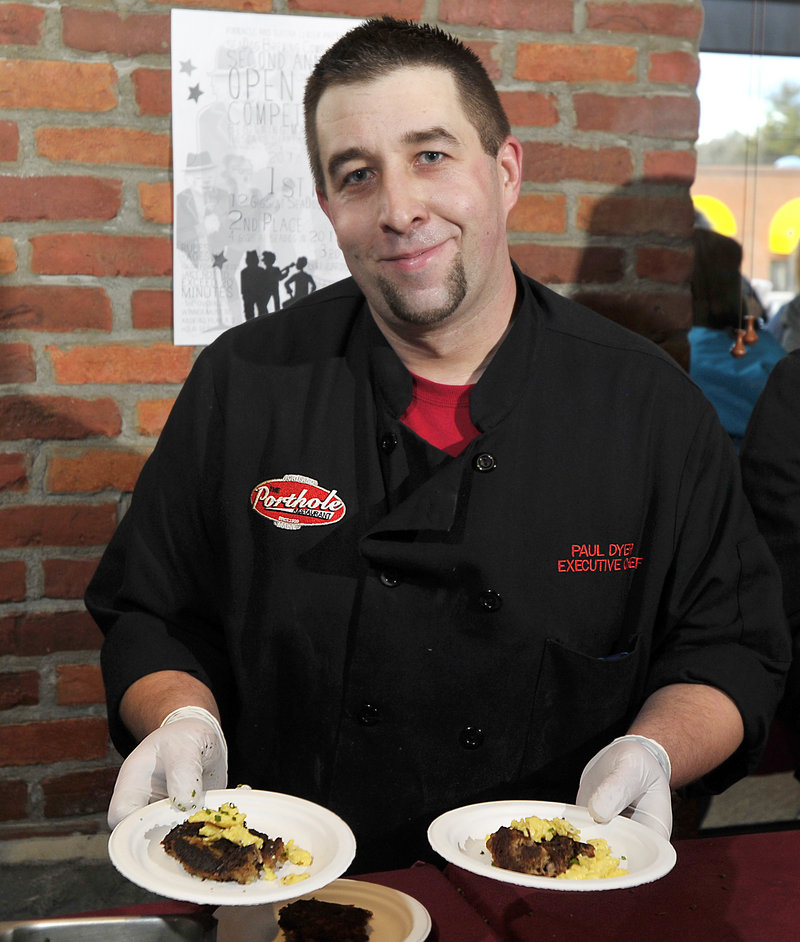This is the time of year that there’s a lot of talk about corned beef and cabbage. The Americanized dish (in Dublin, they actually eat Irish bacon and cabbage) is one of the most popular foods of St. Patrick’s Day.
This year, let’s talk about the day after. If you make corned beef and cabbage at home on Saturday, chances are you’ll have leftovers that could be made into corned beef hash for Sunday brunch.
If you prefer letting someone else do the heavy lifting, you’ll find housemade corned beef hash on brunch menus all over town. Most versions come topped with a couple of poached or over-easy eggs and a side of toast. Break those yolks and let them run into the hash, and your taste buds will be in heaven savoring this delicious New England tradition.
Even so, corned beef hash is kind of like cilantro – people either love it or hate it, with not much room in between. Even in the world of people who like corned beef hash, there are vast gulfs between whose who prefer it shoveled from a can versus those who like it made from scratch and think can-eaters are full of blarney.
“Some people think that corned beef hash is the hash they get from a can that’s almost like dog food or something,” says Danielle Scalora, chef at Hot Suppa in Portland, home of one of the most popular corned beef hash dishes in the city. “And some people have a hankering for that, I get it. But we really try to put quality into ours.”
The hash at Hot Suppa is made with shredded corned beef from Kinnealey in Boston. It includes bits of carrot and onion, larger chunks of potato and a little thyme. The meat is juicy and flavorful, and likely to turn anyone who’s indifferent about the dish into a fan.
Scalora and other chefs say the secret to making good corned beef is to buy quality beef, then cook the meat low and slow. Hot Suppa then throws it on the griddle and gives it a good crispy sear.
At the Good Egg Cafe on Middle Street in Portland, the cooks still prepare Aunt Mo’s Corned Beef Hash, the same hash that was served at the original Good Egg on Congress 30 years ago. (Aunt Mo, I was sorry to learn, never actually existed.)
Proprietor Mary Paine agrees that slow cooking the brisket is essential to a good corned beef, but she has another secret as well: The potatoes in her hash are baked before they are chopped up.
The Good Egg also makes a popular vegetarian hash made with marinated tempeh, spinach and broccoli. Paine says the restaurant sells almost as much vegetarian hash as the corned beef version.
At The Porthole Restaurant on Custom House Wharf, chef Paul Dyer makes hash with a plain brisket instead of meat that has been corned. He adds onions and potatoes, then flavors it with fresh thyme and garlic, a little mustard and a splash of white wine.
This flavorful hash – topped with a bit of scrambled egg at the Incredible Breakfast Cook-Off last week – was featured on the Food Network show “Diners, Drive-Ins and Dives.”
“Keep it simple,” Dyer advises. “It really is such a simple thing, and an easy product to really bring flavor out. You don’t really have to add a lot to it to get a good flavor.”
Lisa Kostopoulos, owner of The Good Table in Cape Elizabeth, says her restaurant’s corned beef hash “literally is just onions and potatoes.” It’s her dad Tony’s recipe, and the corned beef is slowly boiled for four to five hours instead of roasted.
“I myself love a really chunky one like Bintliff’s makes,” Kostopoulos said. “A shredded, chunky one.”
Bintliff’s Restaurant in Ogunquit is known for its corned beef hash. Norm Hebert Jr., who runs the restaurant with his father, Norm Sr., says it’s especially popular with the tourists who flock to the coast during the summer.
“We have a lot of people who come in a number of times during the season to have our corned beef hash,” Hebert said. “In 2010, we went through 6,000 pounds of brisket. I haven’t gotten my report for 2011, but I’m going to guess that in 2011, we’re probably going to close to 7,000.”
Hebert’s recipe uses “water, pickling spice and TLC.” He slow cooks the brisket for 12 to 14 hours, sautes the onions separately, then adds the brisket along with some of the brisket stock to add more flavor. It’s served with whole wheat toast and poached eggs.
“Ironically, we’ve had a few people that have come in and said, ‘I’m sorry, we don’t like it. It’s not out of a can,’ ” Hebert said. “I’m like, ‘You’re absolutely right.
“It’s not out of a can.’ ”
Staff Writer Meredith Goad can be contacted at 791-6332 or at: mgoad@pressherald.com
Send questions/comments to the editors.






Success. Please wait for the page to reload. If the page does not reload within 5 seconds, please refresh the page.
Enter your email and password to access comments.
Hi, to comment on stories you must . This profile is in addition to your subscription and website login.
Already have a commenting profile? .
Invalid username/password.
Please check your email to confirm and complete your registration.
Only subscribers are eligible to post comments. Please subscribe or login first for digital access. Here’s why.
Use the form below to reset your password. When you've submitted your account email, we will send an email with a reset code.